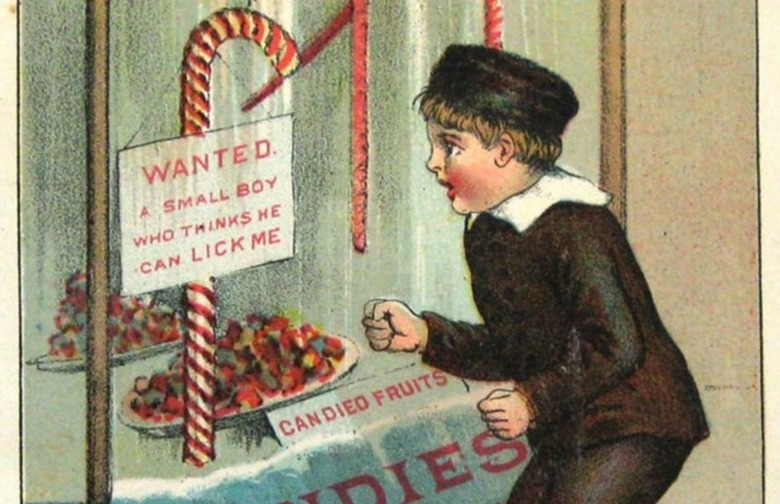10 Things You Didn't Know About Candy Canes
Candy canes are one of the most iconic foods of the Christmas season, and for many kids (and adults), Christmas without a candy cane is incomplete. They decorate trees, Santa Claus hand them out at the mall, new flavors are being invented all the time, and they come in sizes big enough to satisfy any craving. But what's their history, and how did they come to be synonymous with Christmas?
The Curved and Straight Parts Have Names
The curved part of the candy cane is called the "warble," and the straight part is called the strabe.
The First Candy Canes Were All White
The very first candy canes were simply white sticks of candy. The first published candy cane recipe came in 1844; the red stripes were there but there was no curve.
Early Candy Canes Were Very Difficult to Produce
The candy cane achieved widespread popularity thanks to a confectioner named Bob McCormack, who started producing them in 1919 and became one of the world's leading candy cane producers by the 1950s. Before automation, however, the hot candy had to be bent by hand, and more than 20 percent of all canes broke during production.
Its Ties to Christianity Are Disputed
We know that candy canes were first mentioned in association with Christmas in 1874, and the first mention of hanging them on Christmas trees came in 1882. So though they've long been associated with Christmas, it's unclear if there's any actual association with the Christian religion.
The Process Wasn’t Automated Until the 1950s
There is one connection to Christianity that we can confirm: Bob McCormack's brother-in-law, a Catholic priest named Gregory Harding Keller, invented the machine that automated candy cane production in 1957.
It Has a Close Swedish Cousin
Candy canes most likely evolved from a Swedish candy called polkagris. Invented in 1859, these straight candy sticks were originally peppermint flavored with red and white stripes. Today there are dozens of colors and shapes, and the candy isn't associated with Christmas.
The World’s Largest Candy Cane Measured 51 Feet Long
The longest candy cane in history was created by a Geneva, Illinois, pastry chef named Alain Roby in 2012. Roby also holds records for the tallest cooked sugar building and tallest chocolate sculpture.
Nearly 2 Billion Candy Canes Are Sold Each Christmas Season
Each year, 1.7 billion candy canes are produced, and 90 percent of them are sold between Thanksgiving and Christmas.
They’re the Top Non-Chocolate Candy Sold During December
The top-selling week for candy canes annually is the second week of December, when everyone stocks up on Christmas supplies.
Most Candy Canes Contain Only 50 Calories
Candy canes contain no fat, and though they're certainly high in sugar, an average five-inch candy cane contains only 50 calories.










